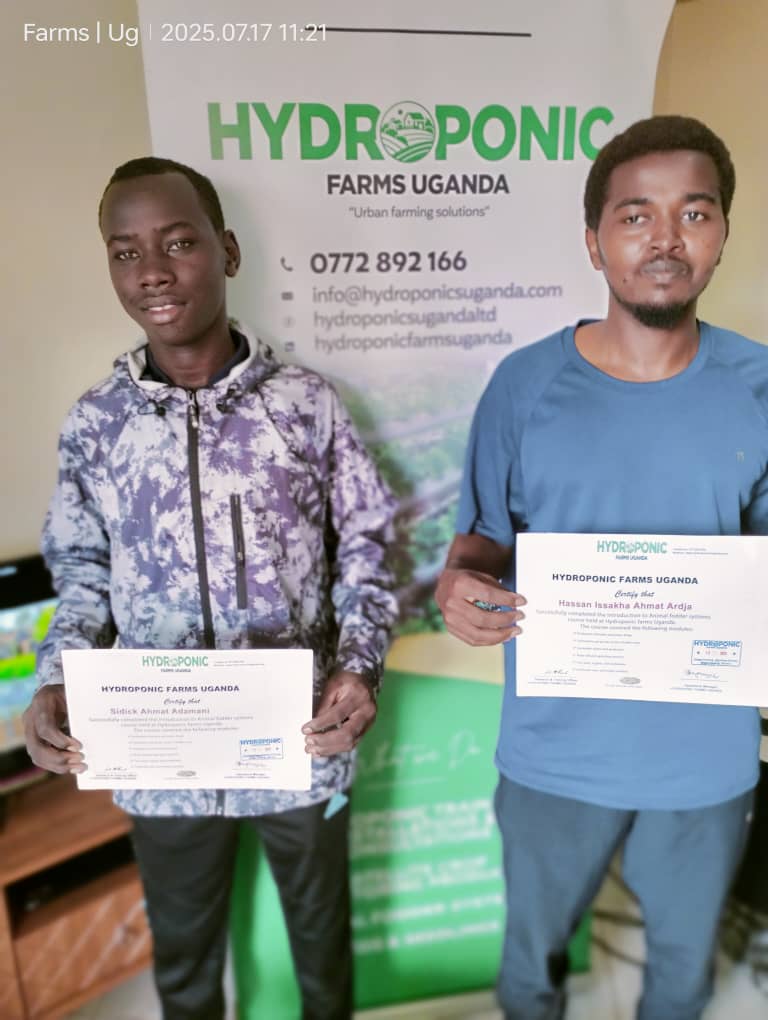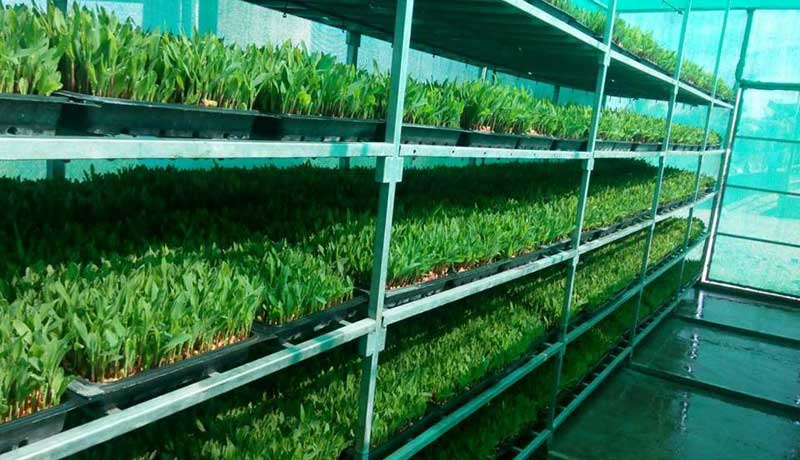Hydroponic Fodder Growing Systems
A Smart, Sustainable Solution for Livestock Feed
Introduction to Animal Fodder Systems
Animal fodder systems are methods used to grow and supply feed for livestock. These systems ensure animals get enough nutritious food, boosting health and farm productivity.
Types of Fodder Systems
- Conventional: Grazing or cut-and-carry fresh feed.
- Hydroponic: Soil-less, water-based system supplying controlled nutrients.
- Silage & Hay: Preserved fodder for dry seasons.
- Mixed Feed: Combining grazing with extra feed.
Advantages
- Year-round feed production
- Less space and water required
- Faster growth (6–8 days)
- Lower feed costs
- Better animal health and performance
Disadvantages
- Setup costs can be high
- Electricity often required for water circulation
- Needs regular cleaning and monitoring
- Algae and mold risks if hygiene is poor
Training in Fodder Systems


Hydroponic Fodder Growing Cycle
This is a typical 7-day growing cycle with practical icons for each stage:
| Day | Stage | Description | Icon |
|---|---|---|---|
| Day 1 | Seed Soaking | Soak seeds in water with salt to prevent algae. | |
| Day 2 | Sprouting | Seeds begin sprouting; keep them moist. | |
| Day 3 | Growth | Roots develop; maintain moisture. | |
| Day 4 | Greening | Green shoots appear; photosynthesis starts. | |
| Day 5 | Maturation | Fodder grows to full height. | |
| Day 6 | Harvest Preparation | Stop watering to reduce excess moisture. | |
| Day 7 | Harvesting | Cut and feed fresh to livestock. |
Best Seeds for Hydroponic Fodder
- Barley
- Wheat
- Oats
- Maize (Corn)
- Millet
- Sorghum
How to Grow Fodder Without Electricity
Hydroponic fodder systems can work without electricity if you:
- Water trays manually 2–3 times daily.
- Use natural daylight for greening.
- Use well-ventilated shaded spaces to control temperature.
- Rotate trays by hand for even growth.
- Use gravity-fed water tanks for simple drip irrigation.
- Cover trays to limit algae growth from sunlight exposure.
Using Salt to Prevent Algae
Algae can damage your fodder if left unchecked. Add 0.5–1% table salt to the soaking water. This naturally controls algae without harming seeds. Also:
- Clean trays daily.
- Keep reservoirs covered.
- Use clean water with proper pH (5.5–6.5).